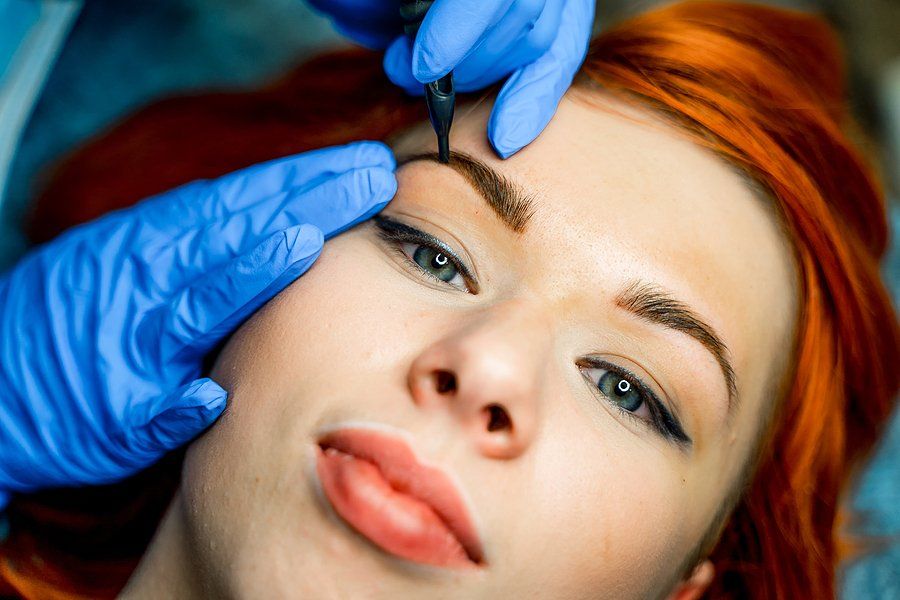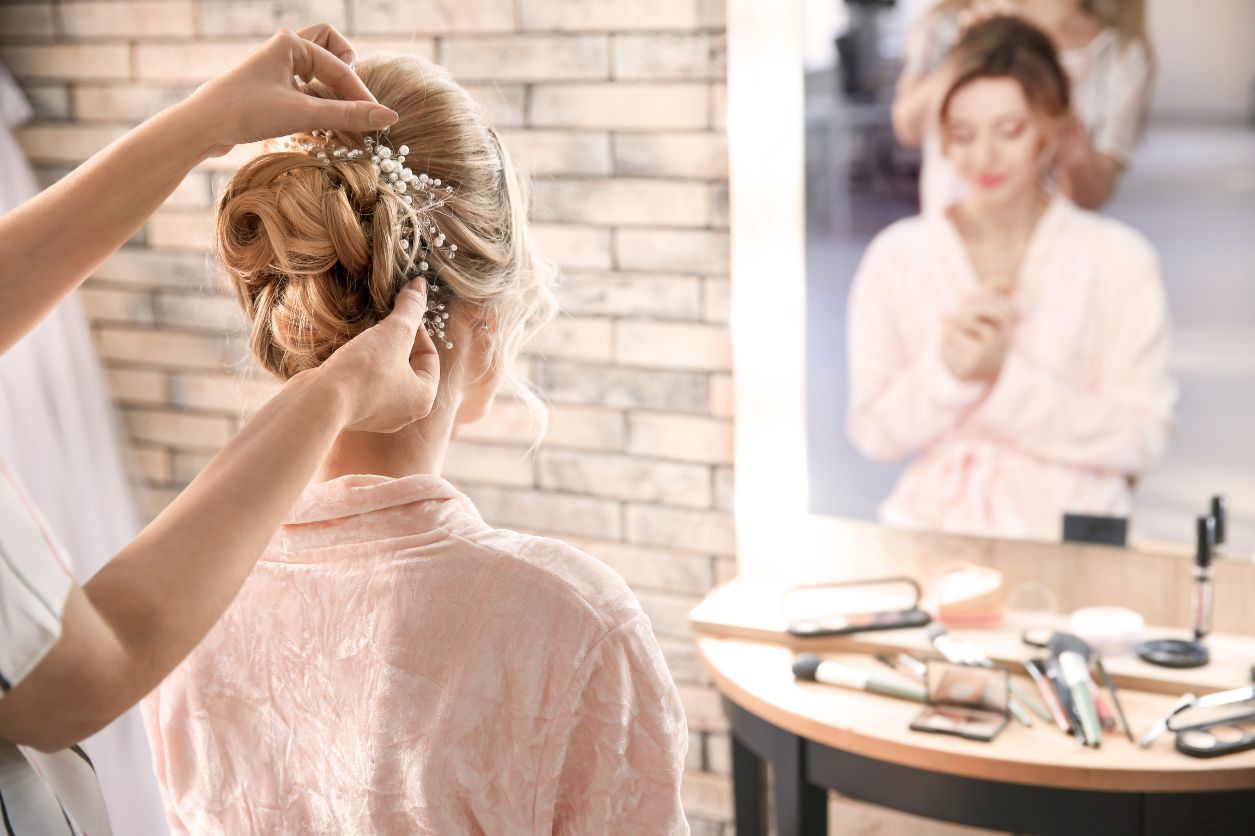The History Of Hair Salons Throughout The Ages
Today, a visit to a hair and beauty salon is a regular date on the calendar for many of us. The range of state of the art treatments available expands every year, from laser technology to remove unwanted body hair, to the latest hair extension techniques.
Spending an hour or two being pampered by professionals and leaving the salon knowing that you are looking your very best is a sure-fire mood booster! During the pandemic when hairdressers and beauty parlours were forced to shut their doors, many of us realised just how important a decent haircut or an eyebrow wax is to our sense of wellbeing.
Here’s a look at how the modern beauty industry developed into the sleek and sophisticated salons of today.
The earliest hairdressers can be traced back to Ancient Egypt, where historians believe women used natural henna dyes to colour their hair and cover up grey. They also made conditioning treatments from a mixture of almond and castor oil and scented with frankincense.
However, it was the Ancient Romans who really laid the foundations from which many hair and beauty traditions began. In early Rome, the majority of people styled their own hair out of necessity, but as the Empire grew, hairstyles became more distinctive among the wealthier classes and were an important part of personal identity, much like they are today.
In fact, in Roman society, hairstyles were an important indicator of wealth and status. The more elaborate the hairstyle, the more time and money the person had to spend on luxuries. Natural hairstyles were a sign of an uncultured person; the only exception was young girls who were allowed to have loose flowing locks.
Mature Roman women would often wear their hair parted and braided or wrapped, and would decorate it with floral crowns for special occasions. For men, short, well groomed hair was a sign that they were in possession of slaves to tend to their hair for them.
Later, barbers set up business within general shops or market stalls. They become popular places not just for grooming, but also as social spaces where men would gather to exchange the latest gossip and news. The Romans are also believed to have developed the first curling tongs, which were hollow metal tubes heated on an open fire.
During the mediaeval era, the emphasis on personal hygiene and appearance fell away, perhaps because of the devastating effect of the bubonic plague, which was thought to have been spread through water. Therefore, public baths and grooming parlours were uncommon.
By the 18th century, there was renewed interest in fashion and style, and hairdressing started to become a serious business. The world’s first hairdryer was invented in France in 1890, although it was a cumbersome device that could only be used in a salon. However, it gave hairdressers much more control and flexibility over the styles they could create.
During the twentieth century, we have seen the rise of the celebrity hairdresser such as John Freida and Vidal Sassoon. Nowadays, hairstyles are more varied than ever before, with a huge choice of cuts, colours, and styles available.
If you are looking for microblading treatments in Brentwood, please get in touch today.

Summer 2025 has shown us plenty of warmth and sunshine so far, which is great for holidays, festivals and days at the beach. But all that sun and humidity can wreak havoc on your hair, whether you’re dealing with frizz, dryness, or faded colour. Here are some salon-approved tips to help you protect your locks and keep them looking their best all season long. Hydrate, hydrate, hydrate Just like your skin, your hair needs extra moisture in the summer. Hot weather, UV exposure and swimming can dry your strands out. Use a hydrating shampoo and conditioner, and add a weekly hair mask to your routine. Look for products containing ingredients like argan oil, shea butter, or keratin for a deep moisture boost. Try a hair botox treatment If you’re struggling with frizz, dryness, or general lack of shine, a hair botox treatment can be a game-changer. This intensive conditioning treatment smooths and strengthens hair by filling in damaged areas on the strand. It’s ideal for summer because it helps your hair stay sleek and glossy even in humid conditions. Always use a heat protectant If you’re using straighteners, curling wands or even a hairdryer, don’t forget to apply a heat protectant spray or serum first. This forms a barrier that helps reduce damage from hot tools—and it also offers protection from the sun’s heat if you’re out and about. Protect your hair fr om the sun Just like your skin, your hair can be damaged by UV rays. Too much sun can cause colour fading, dryness, and even breakage. Wearing a wide-brimmed hat or scarf is a simple and stylish way to protect your locks. You can also buy UV-protective hair sprays to guard

When our hair is looking its shiny and healthy best, we often feel more confident and happy on the inside as well. There is no occasion when you will want to feel like this more than on your wedding day, which is why hair botox treatment is now a popular pre-wedding prep for brides Here’s a look at what it can do for you. What is hair botox? If you are confused about what hair botox is, don’t worry: it doesn’t involve injectables like the anti-wrinkle version. The hair treatment is an advanced deep conditioning treatment that not only nourishes and smooths the hair, but also rebuilds damaged strands to restore the appearance of strong healthy hair. It contains a variety of proven active ingredients, including keratin, collagen, amino acids, proteins and vitamins. These work together to combat frizz and add body and shine without the damaging effects of chemical relaxers. Don’t worry if you love your waves or curls: the treatment will just make them look smoother and glossier without weighing them down. Why hair botox is the perfect pre-wedding treatment Here’s why hair botox is fast becoming a must-have pre-wedding treatment for brides: Banish the frizz Even if your hair is naturally smooth, your wedding day will probably involve some time outdoors as you pose for photographs and meet and greet guests. The Great British weather can be unpredictable, with heat and humidity or drizzle playing havoc with even the most carefully styled hair. Hair Botox effectively controls frizz throughout the day and into the night, so your photos will always show you at your most sleek and stylish. Salon standard shine that shows Hair botox will add a natural looking gloss to your hair that no regular conditioner can match, giving you that professionally styled sheen even if you are out in all weathers. Your gorgeous hair will provide your wedding photos and videos with that extra wow factor. Soft and manageable hair for your dream bridal do Bridal hair calls for hair that is in great condition, so if your hair is dull, dry, or prone to flyaways and split ends, then hair botox is the answer to your prayers. Whether you are dreaming of soft beachy waves or a classic up do, your stylist will be able to make you look the very best version of yourself. Your dream honeymoon hair The results of your treatment will last beyond the big day: you will have beautiful glossy hair throughout your honeymoon, making your holiday styling effortless and giving you plenty of options. Tips for the best results Ideally, book your treatment at least two to four weeks before the big day to allow your hair to settle and to be ready in time for your trial hair appointment. Avoid colouring your hair directly after the treatments, and ask your stylist for tips on how to prolong the results.








